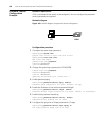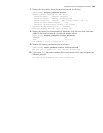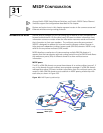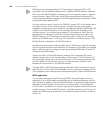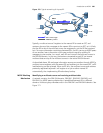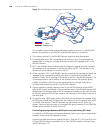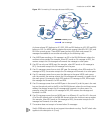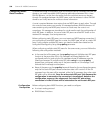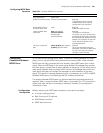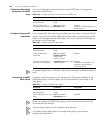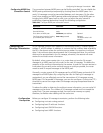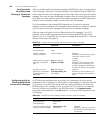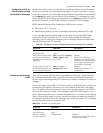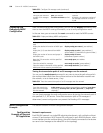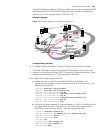
590 CHAPTER 31: MSDP CONFIGURATION
Configuring MSDP
Basic Functions
To enable exchange of information from the multicast source S between two PIM-SM
domains, you need to establish MSDP peering relationships between RPs in these
PIM-SM domains, so that the information from the multicast source can be sent
through SA messages between the MSDP peers, and the receivers in other PIM-SM
domains can finally receive the multicast source information.
A route is required between two routers that are MSDP peers to each other. Through
this route the two routers can transfer SA messages between PIM-SM domains. An
area containing only one MSDP peer, known as a stub area, the route is not
compulsory. SA messages are transferred in a stub area through the configuration of
static RPF peers. In addition, the use of static RPF peers can avoid RPF check on the
received SA messages, thus saving resources.
Before configuring static RPF peers, you must create an MSDP peering connection. If
you configure only one MSDP peer on a router, the MSDP peer will act as a static RPF
peer. If you configure multiple RPF peers, you need to handle them based on the
configured filtering policy using the rp-policy parameter.
When configuring multiple static RPF peers for the same router, you must follow the
following two configuration methods:
■ In the case that all the peers use the rp-policy keyword: Multiple static RPF peers
function at the same time. RPs in SA messages are filtered based on the
configured prefix list, and only the SA messages whose RP addresses pass the
filtering are received. If multiple static RPF peers using the same rp-policy
keyword are configured, when any of the peers receives an SA message, it will
forward the SA message to other peers.
■ None of the peers use the rp-policy keyword: Based on the configured sequence,
only the first static RPF peer whose connection state is UP is active. All the SA
messages from this peer will be received, while the SA messages from other static
RPF peers will be discarded. Once the active static RPF peer fails (because the
configuration is removed or the connection is terminated), based on the
configuration sequence, the subsequent first static RPF peer whose
connection is in the UP state will be selected as the active static RPF peer.
Configuration
Prerequisites
Before configuring basic MSDP functions, you need to configure:
■ A unicast routing protocol
■ PIM-SM basic functions



